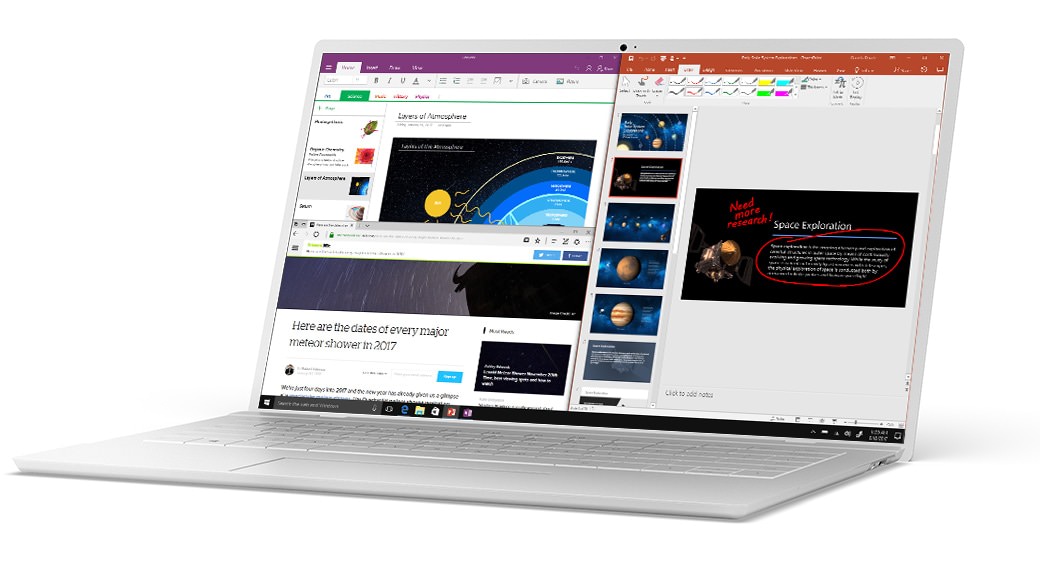I flew out to New York city for the Microsoft education event earlier this week as I was extremely interested in this new education version of Windows 10 S just introduced. This new OS is a lighter version of Windows 10 and optimized for education. It is Microsoft’s answer to Google’s Chrome OS. Microsoft has sandboxed their app store so only those apps run on Windows 10 S along with any Web apps. You have an option to upgrade to a full version of Windows 10 for $50 but, for education markets, Windows 10 S would work fine.
They also used the event to introduce their first Surface Laptop. This is their first foray into a real laptop and this has interesting implications for Microsoft and their partners. We’ll get to this product shortly but first I want to discuss the dilemma Microsoft’s OEM partners will have with this new version of Windows 10 S.
Some vendors who put out low-cost laptops, like Asus and Acer, who have pushed Chromebooks in their line for some time will most likely sell Windows 10 S laptops to both education and consumers and be OK with the slim margins. But, for their major partners like Dell, HP, and Lenovo, Windows 10 S is a challenge. Although these three do sell Chromebooks as part of their education offerings, Chromebooks are mostly loss leaders for them. The real money in education is selling full-priced laptops to the teachers and administrators and, while they move some Chromebooks in volume, their low margins make it hard for them to make any real money on them and instead really just use them to get their higher priced laptops into the schools.
But Windows 10 S, even with its sandboxed apps, is a real Windows machine. It would not surprise me that, when they go calling on educators and teachers, these folks will be more than willing to abandon their interest in more pricier Windows 10 models and just opt for a lower cost Windows 10 S laptop instead. In this case, if a Windows 10 S laptop from HP or Lenovo is actually priced at $189 or even $299, a simple $50 is all that is needed to upgrade to a full version of Windows and it will be easy to justify instead of buying more expensive $599-$999 models they would be buying if a lower cost Windows machine was not offered.
With Chromebooks, this is not even a consideration. Chromebooks are for the kids. Teachers and administrators use Windows PCs for their lesson plans, running the administration, and managing the kids’ Chromebooks. This dilemma for OEMs is a real one and it will be interesting to see how much they are willing to back Windows 10 S, given both the margin challenge and the potential threat it brings to their education PC business.
They also introduced the Surface laptop, which looks very much like a MacBook Air and is priced about the same at entry level, which is around $999. Up to now, Microsoft’s hardware business was in the Surface tablet 2-in-1s and even the Surface Book is a detachable form of a laptop. But the Surface laptop takes direct aim at products like Dell’s XPS 13, Lenovo’s ThinkPad Yoga and a couple of HP thin and light models they sell to business and higher ed students. I talked with multiple OEMs and, although they heard mumblings about Microsoft doing a laptop, until this week they really did not know Microsoft was going to be a direct competitor.
To say the OEMs were not happy with this move would be an understatement. Microsoft will not do a Windows 10 S notebook and expects the OEMs to do their hardware bidding for them in this competitive low end of the market with thin margins, while Microsoft takes direct aim at their partners’ laptop cash cows.
Although many OEMs were at the Windows 10 S launch, it will be interesting to see how many of them really get behind the low end while now having to do battle with Microsoft at the higher end as well.
To be fair, Microsoft had to do Windows 10 S to try and reclaim some of the market they lost to Chromebooks. But the fact Microsoft is not doing their own low-cost hardware for education to support this new lighter version of Windows 10 is telling.
The next few months will be interesting to watch since Microsoft has already lost the sell-in to education for the next school year as these products are bought in April and May. On the other hand, the Surface laptop will come to market by late August, early September and they will then be directly competing with their partners for higher ed back to school. I would bet this new Microsoft laptop will be hot in this market in the fall.
Microsoft’s hardware partners now have a stronger love/hate relationship with Microsoft because of these moves. They need Microsoft yet struggle with their new hardware prowess as well as their new expectations for them. I sense Microsoft’s relationship with their OEM partners will be even more strained in the future and how they all deal with each other will be even more challenging.

very satisfying in terms of information thank you very much.